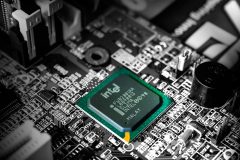When you think about field service, what comes to mind? If it’s not literally delivering service in the field, then you’re probably seeing hard hats, safety glasses and leather tool belts surrounded by industrial machines.
You’d be mostly right, because for a long time that’s how it’s looked. Lots of manual processes, reacting to broken equipment and toting the traditional hardware of years past.
But thanks to the advent of widely available data-rich Internet of Things (IoT) sensors, cloud and mobility, the face of field service is completely changing. It’s now less about fixing malfunctioning stuff and more about implementing service plans that ensure stuff never malfunctions in the first place. And people are willing to pay for that assurance.
See also: Making the megacity sustainable with IoT
While IoT frequently gets associated with novel consumer applications, it’s found a highly productive home with field service once integrated into the broader field service management platform. In fact, McKinsey predicts that 70% of IoT application will take place in industries across the B2B-heavy enterprise like field service. Like IT, CRM, HR and marketing have all seen over the past decade or so, field service is now finally getting its due tech makeover and showing incredible business benefits along the way.
As the CEO of our partner PTC, Jim Heppelmann, once said, “Service is the first killer app for the Internet of Things.” In a survey we just conducted, nearly every single respondent said they see the benefit of field service management – and 90 percent cite benefits from connected equipment specifically.
Where we once flew blind….
But beyond the obvious benefits of connectivity like proactive service ahead of a system breakdown, or building a repository of real-time machine status updates, the host of disruptive technologies are finding applications within field service for one reason above all else.
It provides full visibility where, previously, there was little to none at all.
Say for example you’re deploying a service technician to repair a wind turbine that’s acting up. Traditionally, that technician is going to have to scale hundreds of feet up in the air, take diagnostics, climb back down, order the part, return in the next few days, climb back up, fix it and get back down. And that doesn’t include time spent on the invoicing and other paperwork.
What a slog.
But the disruptive technology we’re seeing gain adoption in field service is giving technicians a platform fully-stocked with automatically gathered information about equipment status, which parts to order, and information on the customer and their warranties. All of a sudden there’s a ton of visibility into what’s what before a tech even goes onsite. That’s huge. It leads to skyrocketing fix rates, new business models where a company isn’t selling products but rather outcomes – i.e, guaranteed uptime on a leased machine versus owning the actual product.
All because the information comes to light through connectivity.
And there’s massive potential here, especially as our own data suggests companies are going to continue adopting new disruptive technologies. Half of those we surveyed said their companies plan to incorporate connected devices over the next two years; another half added wearable technology to the mix; 51 percent plan to use augmented reality.
But, as they say, with great power comes great responsibility. This kind of visibility is not only changing the business of field service, but also the nature of the skillsets – and expectations – of the field technicians themselves. Increased technician mobility, mobile and web access to a centralized operational platform and connectivity to asset data will play a crucial role in closing skill gaps and expanding the industry.
Field service: where IoT squeezes out new revenue?
While the IoT, augmented and virtual reality, drones, wearable technology and mobility change the way organizations operate, it is field service that’s delivering the revenue-generating benefits realized from these technologies to customers.
When you arm technicians with data about customers accessible before they show up for the service call, it boosts efficiency across entire organizations. Our survey data showed the intent to deploy new technology, which points to more investment and energy spent on transforming field service organizations. In fact, 86 percent of surveyed companies see field service as becoming their primary revenue driver over the next two years.
Ultimately, field service offers an IoT and connectivity proving ground for the broader enterprise and across industries from heavy manufacturing to healthcare to energy to transportation. Integrating forward-thinking technology like the IoT, augmented reality and wearables into everyday work life has the potential to shift entire business models of field service organizations.
As more technicians and machines get connected, one thing is clear: linking technicians with the right information to get a job done in an efficient and quality way is more important than ever to realizing outcomes that grow business.
The author is the co-founder & chief strategy officer of ServiceMax, a leading field service management platform based in Pleasanton, CA.










